Compact Unit

HOMECOMING/FAMILY AND FRIENDS DAY
Sunday, September 15, 2013
Guest Writer for This Unit: Tammy L. Kernodle, Professor of Musicology, Miami University
The unit you are viewing, Homecoming/Family and Friends Day, is a compact unit. This means that it is not a complete commentary of the Scripture(s) selected for this day on the calendar, nor does it have a full, supporting cultural resource unit and worship unit. Instead, to enliven the imagination of preachers and teachers, we have provided a sermonic outline, songs, suggested books, and suggested articles, links, and videos. For additional information, see Homecoming/Family and Friends Day in the archives of the Lectionary for 2010–2012.
I. Description of the Liturgical Moment
Homecoming, which has its roots in southern/rural black churches, became increasingly important in the 20th century as migration became a dominant theme in black families. In the years surrounding World War I, World War II, and the Korean War, southern blacks migrated in record numbers to the North and West. These population shifts greatly affected familial, congregational, and community ties. One of the highlights of the worship life of southern black churches was Homecoming, sometimes also referred to as Family and Friends Day, which not only marked the return of family and friends who had moved from their ancestral homes, but in some instances also preceded summer revivals.
Homecoming/Family and Friends Day generally involved a church service that drew not only returning family but also other members of the community together. Following this service, which generally commemorated the history of the church, prominent families, and the community as a whole, there would be a dinner. These dinners ranged from the traditional church picnic where everyone contributed to the meal and socialized in an informal manner to a more formal meal in the fellowship hall of the church. Today many churches have moved away from the celebration of Homecoming, with the Church Anniversary now serving as the main day for celebrating church history and familial relations. Regardless of the nature of the celebration, Homecoming is a time of commemorating the past, reconnecting with family, and the transmitting ritual and history to younger generations.
With this material as our backdrop, we provide a sermonic outline for Homecoming/Family and Friends Day.
II. Homecoming/Family and Friends Day: Sermonic Outline
A. Sermonic Focus Text(s): Proverbs 17:17 (New Revised Standard Version)
A friend loves at all times and kinsfolk are born to share adversity.
B. Possible Titles
i. There's No Place Like Home
ii. No Ordinary Love
iii. The Blessing of Friends and Family
C. Point of Exegetical Inquiry
In any text there can be several words or phrases that require significant exegetical inquiry. One exegetical inquiry raised by this text is what constitutes family. Although in contemporary contexts one often equates the word family solely with individuals who are biologically linked or related to us, this has not always been the historical understanding of this word. African people, especially those descendants of enslaved African people, have never been able to limit their familial ties to biological factors such as DNA. Slavery, Emancipation, social and economic constraints, and migration have all been instrumental in shaping the different contexts through which black people have sought sanctuary in the midst of difficult situations and marked various events that have reflected the circle of life and how we define family.
III. Introduction
Homecoming, as this Sunday is most commonly known as, marks a time in which friends, family, and members of the community gather to celebrate the achievements of the present, commemorate the past, and anticipate the blessings of the future.
IV. Moves/Points
Move/Point One – Look how far we've come with the Lord.
In the Old Testament whenever God performed a miracle on behalf of His chosen people or He restored them to fellowship with Him, a memorial was erected. These memorials sometimes involved the renaming of the specific location of the miracle, as evidenced in Genesis 22:14 when Abraham renamed the site of God’s testing of his faith “The-Lord-Will-Provide” or in Joshua 4, when God parted the waters of the Jordan and provided passage for the Children of Israel, a physical monument was erected so that future generations would not forget the blessings of God.
a. We should never forget where we’ve come from and we should “mark” those places where God has worked on our behalf;
b. We should become “keepers” of the culture and history so that we enable future generations to remain linked with their past; and
c. We should praise God for sustaining us and our bond to one another through the years despite what might physically distance us from one another.
Move/Point Two – God calls us to love without borders.
a. When we move beyond the biological phenomenon of family we begin to reflect the type of inclusive love that Christ called us into;
b. We as believers will be known to the world by our ability to love unconditionally and holistically; and
c. When we tear down the boundaries that make us separate and different, then we reflect the new covenant created with Christ.
Move/Point Three – Membership has its privileges and responsibilities.
a. We are blessed to be part of the family of God;
b. We must ask, Who is my brother and sister?; and
c. We are heirs because of God's love.
V. Challenge
Never forget from whom and from where you come! There is nothing so powerful as knowing who you are and your connection to God and your ancestors. We don't speak much about ancestors and family history nowadays because many of us are no longer connected with family or ancestral homes the way previous generations were. New opportunities through education, jobs, and the creation of extended families through marriage have taken many far away from their grandparents, parents, aunts, uncles, childhood friends, and hometowns. For many of us this has led to a disruption in the passing down of the stories, traditions, and practices that frame our family and community's history.
While this is a sad phenomenon in itself, it represents only one way in which blacks have become separated from their historic past. The lack of knowledge about our past doesn’t end with our individual families, as many of us are aware of historical “firsts” or major advancements that changed society and/or the lives of black people in general since the first Africans arrived in 1619. Now is the time that we challenge ourselves to move beyond the familiar references of Martin Luther King’s “I Have a Dream” speech or Harriet Tubman’s fight for freedom through the Underground Railroad. There is nothing wrong with knowing these figures and their contributions, but they only provide limited perspectives of the contributions of black people. Even in the context of worship, we should find ways to integrate traditions of the past into our contemporary practices.
Challenge yourself to read about the historic contributions of African Americans and/or historical narratives that document the migration experience and the formation of African American churches, universities, and benevolent organizations. With new resources such as ancestry.com it has become easier to trace family genealogies. So challenge yourself, your children, and/or your siblings to trace your family, church, or community history. Every day and every month should be an opportunity to unlock some unknown part of your history as an African in America.
VI. Illustration(s)/Stories
Finding My Way “Home” by Tammy L. Kernodle
A big part of the Homecoming experience was the food that was served at the picnic and dinner. For many migrants, greens, macaroni and cheese, pig feet, and hog head cheese were the only remnants of home that they could take back with them up North. While the church I grew up in never had “Homecoming,” every summer my maternal grandfather would load my brothers, cousins, and me and take us to the “country” for Homecoming at some distant relative’s church. The “country” was merely traveling thirty miles north to Altavista and Gretna, Virginia. But to small kids it seemed as if we went to another country.
While the memories of outhouses and cemeteries that were in backyards or beside the church made me wary of these trips, I can recall the excitement of family reuniting over fresh apple pies, cold watermelon, and the best barbeque this side of the Mississippi River. My mother never ventured with us on these trips, but she always made sure to contribute her “world famous” potato salad. My mother has quite a reputation for making the best potato salad, and she would prepare 20–30 pounds of the delicacy for us to take. Even as young girl I knew my mother’s potato salad was something coveted. People would ask, “Who made the potato salad?” And if the answer wasn’t Carolyn, they skipped the dish. To this day, my mother’s potato salad is still requested by grieving families for dinners following funerals, at church anniversaries, and at holidays with immediate and extended family.
My memories of Homecoming are of heavy plates filled with fried chicken, barbeque, greens, potato salad, homemade yeast rolls, blackberry cobblers, caramel cakes and peach pies, cold sodas stored in washtubs filled with ice, and stories of life in “Charleston,” “Beckley,” “Philadelphia,” and other places up north to which cousins who I did not know and aunts I had never seen had migrated. Hymns and gospel songs sung by different combinations of church members and family accompanied by handclapping generally rounded out the day’s activities and my grandfather would load us back into the car for the trip home. While I was too young to really understand everything that Homecoming stood for, what was apparent to me even then was how important it was to reconnect with family and friends. I’m thankful that my grandfather pushed so hard for my brothers and me to know our extended family or even experience a life different from the one we lived in everyday. Many of those family members have passed on, but every summer my extended family meets “in the country” to celebrate Homecoming and reconnect with their ancestral roots.
As a transplanted southerner now living the North, I now understand how important that annual sojourn southward was to my relatives. Although I don't specifically return for the celebration of a Homecoming celebration associated with a specific congregation, my brothers and I return home every summer to laugh and tell stories while gathered around our parents' table filled with our favorites of potato salad, chicken salad, pulled pork, and other delicacies. I look forward to these trips as they are like a balm to my soul. I generally leave refreshed, light-hearted, and with a car packed full of food and fresh fruits and vegetables I can't get in Ohio.
(The former Lectionary moment by Tammy L. Kernodle for “Homecoming” was part of the Homecoming cultural resource unit for September 20, 2009.)
Growing up in Church by Bernice Johnson Reagon
The first Sunday in September of each year was the highest day at Mt. Early Baptist Church, Southwest Georgia. It was a long day we began by going down to Jordan at the local creek to baptize those who had ‘come thru’ during the two weeks of revival meetings that preceded our big day. After ‘wading in the Jordan,’ we all went home to dress and pack the box of food that would be served between the two services that would be held that day. It was also the beginning of the school year and my sister, Mae Frances, and I always saved one of the 3 new dresses my mother had made to wear to the big day at Mt. Early. The opening service at Mt. Early was always led by the mothers of the church. That service ended with the right hand of fellowship being extended to the new ‘lives in Christ’ who had just been baptized. Every Christian in that the church got up and moved as guided by the ushers singing:
I'm gonna trust in the Lord
I'm gonna trust in the Lord
I'm gonna trust in the Lord till I die
I'm gonna trust in the Lord
I'm gonna trust in the Lord, till I die
(Other lines were:)
I am gonna stay on the battlefield…
Whose going down in the grave with me…
Jesus going down in the grave with me…
Mt Early's sister church was New Provisor Baptist. They also held church on the first Sunday of the month like Mt. Early, and as soon as they finished their service, they drove over to Mt. Early and we all met outside and shared a very special meal.
First, there was a pit in the ground, and Mt. Early men had cooked a whole pig and you could smell pork barbecue in the air. My mother had made her particular style of Brunswick stew. I think every sister had Brunswick stew. You could tell a person's Brunswick stew by the color which was determined by whether and how much mustard was in the pot. The base of the Brunswick stew was a hog head stewed until the meat fell off the bone. The gelatin in the hog head meant that by the time it was time to eat the stew was cold and had a solidity and could be sliced and made into sandwiches—and good Brunswick stew did not run. All of the boxes also held fried chicken, sweet potato pie, greens, cornbread, and some kind of cake. My mother would make chocolate cake, another cook would make coconut cake, another pound cake, some boxes had macaroni and cheese, others potato salad. The women would all be on one side of a long table standing in front of their dishes waiting to serve you. I would get a paper plate and pick from the different choices, adding a little of the barbecue on top, and have a great feast.
Once the feast was over, we all returned to the sanctuary and had the second meeting with New Provisor Baptist Deacons leading the devotional service. With Baptism at the break of dawn, it was three services with a feast—a long day. People on both sides of moving away, those who moved and those who stayed cherished this sacred sharing: a day of worshipping and feasting, storing up sustenance and memories and strength, that which could still be found in that place where they were first formed. They were coming home to their foundational ground.
(The former Lectionary moment by Bernice Johnson Reagon for “Homecoming” was part of the Homecoming cultural resource unit for September 20, 2009.)
VII. Sounds, Sights, and Colors in This Passage
| Sounds: | People laughing; people talking; people gathering together; people mourning; people crying tears of joy and pain; |
| Sights: | People hugging; people laughing; people taking pictures and looking at pictures, letters, and artifacts; people in quiet contemplation; photos of family members, friends, and church activities; |
| Colors: | White; pastel colors like light shades of pink, yellow, blue, and orange; colors representing newness/freshness; and black to commemorate those who have passed on or the struggles/adversities in life. |
VIII. Songs to Accompany This Sermon
A. Well-known Song(s)
- How I Got Over. By Clara Ward
- For Every Mountain. By Kurt Carr
- We Offer Praise. By David Miner
B. Modern Song(s) (Written between 2005–2012)
- Use Me to Deliver Your Word. By Kurt Carr
- My Heart Is Yours. By Phillip Feaster, Fred Hammond, Lawrence Jones, and Calvin Rodgers
- Go This Way. By Derek “DOA” Allen, Alvin Garrett, Elijah “Enok” Jones, Lilly Mac, and Jasmine Williams
C. Congregational Song(s)
- We've Come This Far by Faith. By Albert Goodson. Arr. by Jimmie Abbington
- Somebody Prayed for Me. By Dorothy Norwood and Alvin Darling
- What a Friend We Have in Jesus. By Joseph Scriven. Tune by Charles C. Converse
- We Welcome You. By Marilyn E. Thornton
D. Liturgical Dance Music
- Family (There's a Healing). By Donald Lawrence
- Still Say Thank You. By Smokie Norful
E. Song(s) for the Period of Prayer
- At the Table. By Richard Smallwood
- Be Grateful. By Walter Hawkins
F. Sermonic Selection(s)
- Look How Far We've Come. By Milton Biggham
- Grace of God. By Daniel Moore II and Sheri Jones-Moffett
G. Benediction Song(s)
- Take Me Back. By Andraé Crouch, Teddy Randazzo, and Little Walter
- ‘Til We Meet Again. By Kirk Franklin
IX. Videos, Audio, and/or Interactive Media
- African American Lives Part 1 and 2. Online location: http://www.pbs.org/wnet/aalives/ (accessed 16 April 2013).
- The Two Nations of Black America. Online location: http://www.pbs.org/wgbh/pages/frontline/shows/race/ (accessed 16 April 2013).
- This Far by Faith: African American Spiritual Journeys. Online location: http://www.pbs.org/thisfarbyfaith/ (accessed 16 March 2013).
- Black Family Pledge by Dr. Maya Angelou, recited by Jailyn Gabrielle. Online location: http://www.youtube.com/watch?v=J4pMoajM4_U (accessed 16 March 2013).
- Our Families: LGBT African American Stories. Online location: http://www.youtube.com/watch?v=m1AYIxGM_2g (accessed 16 March 2013).
X. Books to Assist in Preparing Sermons, Bible Studies, and/or Worship Services Related to Homecoming/Family and Friends Day
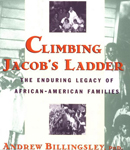 |
Billingsley, Andrew. Climbing Jacob's Ladder: The Enduring Legacy of African American Families. New York, NY: Touchstone, 1994. |
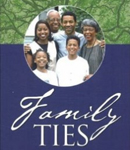 |
Birchett, Colleen. Family Ties: Restoring Unity in the African American Family. Chicago, IL: Urban Ministries, 2006. |
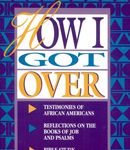 |
Birchett, Colleen. How I Got Over: Testimonies of African Americans, Reflections on the Book of Job and Psalms, Bible Study Applications. Chicago, IL: Urban Ministries, 1994. |
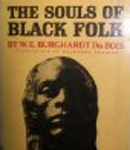 |
Du Bois, W. E. B. The Souls of Black Folk. New York, NY: The New American Library, 1969. |
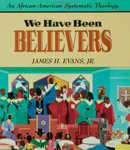 |
Evans, James H. Jr. We Have Been Believers: An African-American Systematic Theology. Minneapolis, MN: Fortress Press, 1992. |
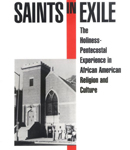 |
Sanders, Cheryl J. Saints in Exile: The Holiness-Pentecostal Experience in African American Religion and Culture. New York, NY: Oxford University Press, 1996. (See Conclusion: Exile and Homecoming, pages 143–151.) |
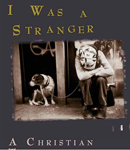 |
Sutherland, Arthur. I Was a Stranger: A Christian Theology of Hospitality. Nashville, TN: Abingdon Press, 2006. |
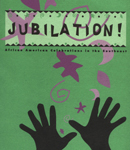 |
Wiggins, Jr. William H. Jubilation!: African American Celebrations in the Southeast. Columbia, SC: University of South Carolina, 1994. |
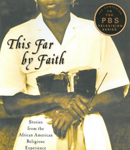 |
Williams, Juan. This Far by Faith: Stories from the African American Religious Experience. New York, NY: William Marrow Paperbacks, 2003. |
XI. Links to Helpful Websites for Homecoming/Family and Friends Day
- A collection of poems to use for friends and family celebrations. Online location: http://www.family-reunion-success.com/family-poem.html#family (accessed 16 April 2013).
- The Old Black Church. Online location: http://theoldblackchurch.blogspot.com/2011/06/family-and-friends-day.html (accessed 17 April 2013).
- Home and Homegoing: Reflections on the Black Church. Online location: http://www.ebony.com/wellness-empowerment/homegoing#axzz2QkOYUTNO (accessed 17 April 2013).
XII. Notes for Select Songs
A. Well-known Song(s)
- How I Got Over. By Clara Ward
Location:
I Feel the Holy Spirit. San Rafael, CA: Gospel Friend, 2005.
- For Every Mountain. By Kurt Carr
Location:
Carr, Kurt and the Kurt Carr Singers. No One Else. Inglewood, CA: Gospocentric, 1997.
- We Offer Praise. By David Miner
Location:
Bryant, Rodney & the Christian Community Mass Choir. He's a Keepa. Indianapolis, IN: Tyscot, 1997.
B. Modern Song(s) (Written between 2005–2012)
- Use Me to Deliver Your Word. By Kurt Carr
Location:
Caesar, Shirley. Good God. Nashville, TN: Light Records, 2012.
- My Heart Is Yours. By Phillip Feaster, Fred Hammond, Lawrence Jones, and Calvin Rodgers
Location:
Hammond, Fred. United Tenors. New York, NY: Verity, 2013.
- Go This Way. By Derek “DOA” Allen, Alvin Garrett, Elijah “Enok” Jones, Lilly Mac, and Jasmine Williams
Location:
Spight, Alexis. L.O.L. (Living Out Loud). Houston, TX: DP Music World Music, 2013.
C. Congregational Song(s)
- We've Come This Far by Faith. By Albert Goodson. Arr. by Jimmie Abbington
Location:
African American Heritage Hymnal. Chicago, IL: GIA Publications, 2001. #412
- Somebody Prayed for Me. By Dorothy Norwood and Alvin Darling
Location:
Zion Still Sings for Every Generation. Nashville, TN: Abingdon Press, 2007. #166
- What a Friend We Have in Jesus. By Joseph Scriven. Tune by Charles C. Converse
Location:
African American Heritage Hymnal. #431
- We Welcome You. By Marilyn E. Thornton
Location:
Zion Still Sings. #195
D. Liturgical Dance Music
- Family (There's a Healing). By Donald Lawrence
Location:
The Murrills. Family Prayer. New York, NY: Verity, 2008.
- Still Say Thank You. By Smokie Norful
Location:
I Need You Now. Brentwood, TN: Chordant, 2002.
E. Song(s) for the Period of Prayer
- At the Table. By Richard Smallwood
Location:
Healing: Live in Detroit. New York, NY: Verity, 1999.
- Be Grateful. By Walter Hawkins
Location:
Gospel Legacy. Nashville, TN: Light Records, 2008.
F. Sermonic Selection(s)
- Look How Far We've Come. By Milton Biggham
Location:
Dallas Fort Worth Mass Choir. I Will Let Nothing Separate Me. Newark, NJ: Savoy, 1991.
- Grace of God. By Daniel Moore II and Sheri Jones-Moffett
Location:
Jones-Moffett, Sheri. Renewed. Brentwood, TN: EMI Christian Music Group, 2009.
G. Benediction Song(s)
- Take Me Back. By Andraé Crouch, Teddy Randazzo, and Little Walter
Location:
Crouch, Andraé. Take Me Back. Nashville, TN: Light Records, 1975.
- ‘Til We Meet Again. By Kirk Franklin
Location:
Franklin, Kirk & The Family. Kirk Franklin and the Family. Santa Monica, CA: Interscope, 1993.



